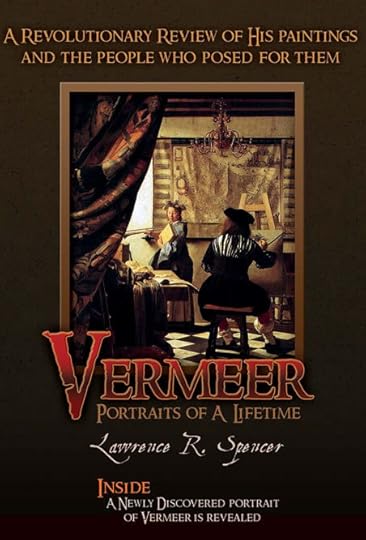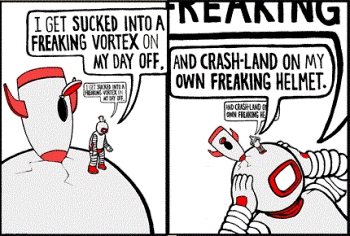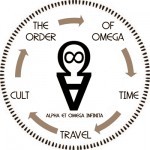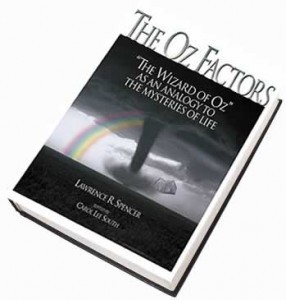Lawrence R. Spencer's Blog, page 99
April 10, 2022
FAKE ARCHAEOLOGY
Republished by Blog Post Promoter
When I was 12 years old (this lifetime) I decided I would become an Archaeologist. I wanted to discover the Hidden Secrets of Humanity…. dig holes in the desert in search of un-looted treasure… decipher the indecipherable ciphers…. understand My Meaning and My Origins! 55 years later I have discovered all of these things…(except for the treasure, which was looted a long time ago by university professors, Zahi Hawass*, and other “legalized” thieves…), but without having to dig a single hole! The field of Archaeology, as a “science”, has been developed, refined, celebrated and defrauded by the best and the worst grave robbers of Western Civilization.

Personally, by the time I started attending my first college courses in Archaeology and Anthropology I realized that the only “mysterious caves” I really wanted to explore were between the legs of my female classmates! And alas, my career aspiration was abandoned…. This proved to be a fortunate circumstance, as I eventually discovered that the majority of truly revelatory archaeological discoveries where covered up, denied, and buried in the crypts of the Smithsonian Institute, the Vatican, The Library of Congress, the Ministry of Egyptology, The British Museum and other government and academic vested interests who do not EVER want you and I to discover the fact that Humankind did not “evolve” on Earth. We have all been imported from elsewhere. The “artifacts” of Archaeology are nothing more than tattered fragments of a False Facade civilization placed carefully to deceive us into believing that we are not living on a prison planet. For details, read the book ALIEN INTERVIEW.
________________
* Zahi Hawass (Arabic: زاهي حواس; born May 28, 1947) is an Egyptian archaeologist, an Egyptologist, and former Minister of State for Antiquities Affairs. He has also worked at archaeological sites in the Nile Delta, the Western Desert, and the Upper Nile Valley. Hawass has received widespread publicity internationally, and was the subject of a reality television series in the United States, Chasing Mummies. His views and links to business ventures and the Mubarak regime have engendered controversy. In connection with the awarding of a gift shop contract at the Egyptian Museum and alleged smuggling of antiquities, he was sentenced to a prison term, which was later lifted.
April 9, 2022
FROM OPERATIC DIVA TO CHILD PRODIGY?
Republished by Blog Post Promoter
Reincarnation is believed to occur when the soul or spirit, after the death of the body, comes back to life in a new form. However, once born sometime things from a person’s previous life are forgotten. (Or not…)
A child prodigy is someone who, at an early age, masters one or more skills far beyond their level of maturity. One criterion for classifying prodigies is: a prodigy is a child, typically younger than 18 years old, who is performing at the level of a highly trained adult in a very demanding field of endeavor.
Here is a possible example, in the form of an operatic diva:
Maria Callas (December 2, 1923 – September 16, 1977) was an American-born Greek soprano and one of the most renowned opera singers of the 20th century. was an American-born Greek soprano and one of the most renowned opera singers of the 20th century. She combined an impressive bel canto technique, a wide-ranging voice and great dramatic gifts. An extremely versatile singer, her repertoire ranged from classical opera seria to the bel canto operas of Donizetti, Bellini and Rossini; further, to the works of Verdi and Puccini; and, in her early career, to the music dramas of Wagner. Her remarkable musical and dramatic talents led to her being hailed as La Divina. (Wikipedia)
Jacqueline Marie “Jackie” Evancho (born April 9, 2000) is also an American singer. Evancho started singing when she first watched the musical The Phantom of the Opera on DVD. Her mother heard her singing songs from the musical and allowed her to enter the 2008 Kean Idol, a local talent contest. She sang “Wishing You Were Somehow Here Again”, finishing, on the cusp of her 8th birthday, as first runner-up; the winner was 20 years old. Eventually Evancho participated in other talent contests and started a YouTube channel. She began taking vocal lessons for a short period of time when she was 8, in June 2008, after her success in the 2008 Kean Idol contest. (Wikipedia)
HOW TO HAIKU
Republished by Blog Post Promoter
The Japanese haiku and the English language haiku have several critical differences. In Japanese the haiku is composed of 17 sound units divided into three parts – one with 5 units, one with 7 units and another with 5 units. Since sound units are much shorter than English syllables, it has been found that following the Japanese example results in a much longer poem often filled up to make the count with unnecessary words.
The Japanese write their haiku in one line, in order to see clearly the parts of the haiku. In English each part is given a line. This allows the reader time to form an image in the mind before the eyes go back to the left margin for more words. The line breaks also act as a type of punctuation. The kigo, or season word, is a vital part of the Japanese haiku, but in English it is often ignored and not well understood. Therefore, a great number of English haiku do not have a season word and yet are considered to be haiku. The Japanese, because of their longer history of reading haiku, understand that there are two parts to the poem. In English these are called the phrase and fragment. One line is the fragment and the other two lines combine grammatically to become the phrase. Without this combining the two lines together the haiku will sound ‘choppy’ as the voice drops at the end of each line. (WikiHow.com)
LAWRENCE R. SPENCER RADIO INTERVIEW
Republished by Blog Post Promoter
[image error] CLICK ON THE FOLLOWING LINK TO LISTEN TO AN INTERVIEW WITH LAWRENCE R. SPENCER ABOUT THE BOOKS “ALIEN INTERVIEW” and “1001 THINGS TO DO WHILE YOU’RE DEAD”CLICK ON THIS LINK TO LISTEN – http://ghostanddemonhunter.planetparanormal.com/?p=537
NOTE: THE INTERVEIW STARTS AT MINUTE 52:30
Show Hosts:

The Ghostman Shaun B. started ghost hunting over ten years ago and has always been curious about the paranormal. Raised in haunted home and he specializes in EVP and blue collar ghost hunting.

Nathan S. AKA The Demon Hunter has 15 years of experience as a paranormal investigator and is going on 20 years in psychic and supernatural research. He specializing in malevolent hauntings. He is a student of Demonology and has worked with several paranormal groups.
April 8, 2022
RECURSIVE REALITY
Republished by Blog Post Promoter
Multiple worlds that exist side-by-side are fairly common in fantasy and speculative fiction, but sometimes things get more complicated than onedream world, Another Dimension, a simple Alternate Universe, or just one Show Within a Show.
If the characters discover more layers within or without (or the layers are implied within the story), then you have a Recursive Reality.
Recursion is a phenomenon in mathematics and computer science where an equation refers to itself, allowing a finite function to represent an infinite set of objects. In physical terms, it is similar in structure to Russian Matryoshka dolls, which are designed to nest one inside the other.
(READ THE ENTIRE ARTICLE HERE) Recursive Reality – Television Tropes & Idioms
This Article is endorsed by THE ORDER OF OMEGA TIME TRAVEL CULT
April 7, 2022
ART IS THE PERSONAL EXPERIENCE OF BEAUTY
Republished by Blog Post Promoter

I am very sure that my new book, Vermeer: Portraits of A Lifetime, will be considered by many people to be delusional or heretical. Many will dismiss my observations and comments because they don’t follow the dictates of “authoritative research” or the opinions of art “experts”.
This book may threaten persons who have a financial vested interest in the Vermeer paintings that still exist today, as their livelihood or financial well-being depend to some degree on the value currently assigned to the paintings.
Although the monetary value of Vermeer’s paintings have been vastly inflated, in part, due to the mystique created by authorities or speculators, it is not my intention to devaluate them. It is not my intention to invalidate property that was sold or bartered by Vermeer and his wife, Catharina, hundreds of years ago. Quite the contrary.
My intention is to honor the lives of Johannes, Catharina, their eleven surviving children and Maria Thins, his mother-in-law and patroness.
This book does not represent or endorse any financial, spiritual, religious, political organization or practice or philosophy of any kind. All personal observations and opinions offered by the author herein are purely and solely personal opinions, with no other source than those noted in the footnotes or appendix.
Any and all individuals or organizations from whom research and/or opinions have been borrowed or sited for referential purposes in this book are not affiliated with and do not in any way acknowledge the validity of or endorse the findings or assertions of the author or publisher of this book.
Finally, this book is not intended for people who have a vested interest, or who “know best”. Personal observations, whether visual, empathetic or conjectural, of the author about the life and death of Vermeer, 300 years after the fact, are wholly subjective.
April 6, 2022
WISHES SWIM
Republished by Blog Post Promoter
Do you ever feel like humans are pre-programmed automatons? Do you wish you could let yourself be who you know you really are in your heart?
April 3, 2022
EVERYTHING LOGIC
Republished by Blog Post Promoter
A–“WHICH IS THE WAY BACK TO KANSAS?”
“I’d give anything to get out of Oz altogether, but which is the way back to Kansas? I can’t go the way I came.”–Dorothy
“The only person who might know would be the great and wonderful Wizard of Oz himself. He lives in the Emerald City and that’s a long journey from here. Did you bring your broomstick with you?”–Glinda, the Good Witch of the North
“No, I’m afraid I didn’t.”–Dorothy
“Well then, you’ll have to walk. It’s always best to start at the beginning and all you do is follow the Yellow Brick Road.”–Glinda in ‘The Wizard of Oz’
One of the primordial questions Dorothy was trying to answer in ‘The Wizard of Oz’ was, “which is the way back to Kansas?”
Trying to figure out the answers to the mysteries of life here on planet Earth is even harder than Dorothy trying to get back to Kansas–none of us have a broomstick to ride, we don’t have a good witch to ask for directions and there is no Yellow Brick Road to follow. So, we’re stuck here having to figure it out for ourselves, logically, using the information we have in our environment.
To begin at the beginning, the Land of Oz is a type of Universe. According to Webster’s Dictionary, a universe is defined as: “an area, province or sphere, as of thought or activity, regarded as a distinct, comprehensive system or world.”
The physical reality we all share on Earth and everything throughout the surrounding space is called the Physical Universe (PU).
On the other side of reality is your own imagination, your personal perceptions, viewpoints, dreams, hopes, desires, and creations, which comprise Your Own Universe (YOU).
The Land of Oz can be considered to be a Universe dreamed up by Dorothy, as conceived in the mind of L Frank Baum, the author of the book. (It has been speculated that the author created the “Land of Oz” after glancing at his file cabinet. The two file drawers were labeled “A-N” and “O-Z”. Dorothy could just as easily have been transported by the author’s pen into the imaginary “Land of AN”.)
In the movie version of the story, Dorothy creates the Land of Oz in a dream, induced by a knock on the head, using remnants of Kansas in the physical universe mixed together with creations from her own universe–which, for Dorothy, existed over the rainbow in the Land of Oz.
Every Universe seems to be made up of its own, peculiar set of Laws. The PHYSICAL UNIVERSE, for example, is built on a set of agreed upon Laws. A few examples of these Laws are:
The Law of Motion: “For every action, there is an equal and opposite reaction.”
The Food Chain Law: “In order for one life organism to live, another life organism must die.”
The Law of Gravity: “Whatever goes up, must come down.”
The Law of Time: “Time marches on.”
Most of us take the Laws of the Physical Universe for granted because everyone seems to agree with them. However, such laws leave a lot to be desired when compared to the Laws of a Universe we might create for ourselves!
In YOUR OWN UNIVERSE you can create any set of Laws, or have no Laws at all. You can make them, change them or break them. The Laws of YOUR OWN UNIVERSE can be anything or nothing, limited only by your imagination.
In YOUR OWN UNIVERSE, everything you wish comes true, because you are the “wizard” of YOUR OWN UNIVERSE!
In Dorothy’s universe, Scarecrows and trees can talk; witches can be beautiful and fly in magic bubbles; Munchkin girls join the “Lullaby League” and Munchkin boys have a “Lollipop Guild”; horses can change their color; and, Dorothy can dye her eyes to match her gown.
Dorothy’s first awareness of the particular universe she calls the Land of Oz is the realization that she is definitely NOT in Kansas. When she opens the door to her farmhouse, which has just crash-landed in Oz, Dorothy compares her past experience in Kansas with her present experience in Munchkinland. The Technicolor flowers, a good witch in a flying bubble, all the little brightly dressed people, a yellow brick road, etc, are definitely NOT similar to anything she has ever seen in Kansas.
The Land of Oz is an example of what Earth scientists would call an anomaly. For Dorothy, the anomaly is a departure from the usual arrangement of things as compared to her past experiences. In the universe of Oz, everything is so completely different from the universe Dorothy is familiar with in Kansas that she thinks she is lost.
How do you find the way back home when you are lost?
One way is to ask someone for directions. Of course, if you’ve ever been sent on a wild goose chase by a stranger, the experience taught you that it is a good idea to be somewhat selective as to whom you ask for directions. So, how do you know who is a reliable source of directions or information?
Perhaps it would be a good idea to find out something about the person from whom you are asking directions before you act upon what they tell you. Right? (Or, is it left?)
In our example, should Dorothy be asking for directions back to Kansas from the local natives, the Munchkins?
The main reason one would ask a local resident for directions is that one makes the assumption, otherwise known as an hypothesis (which is the first step in creating any scientific theory), that someone who lives in the area will be a reliable source of information and will give correct directions.
Well, in Dorothy’s case, the Munchkins have lots of familiarity with the Land of Oz, but they have no familiarity with Kansas. Fortunately for Dorothy, they are honest enough to tell her that they don’t have a clue where Kansas is, and they pass the buck to the Wizard of Oz, who they believe knows everything. And, based on their familiarity with the Yellow Brick Road and Munchkinland, they are certain that it leads to where the Great Oz lives.
Most would agree that a certainty is better than an assumption. When one has no familiarity based on personal experience or observation, it is best not to assume that one knows the correct directions. So, one asks for information from someone one believe knows–like a scientist, for example–who is supposed to be familiar with the area or subject in question.
Do the local Munchkins or local scientists of Oz give Dorothy the correct directions to help her get back to Kansas?
When Dorothy crash-landed her house in Munchkin City, the Munchkins cowered under the bushes and flowers in terror of retribution for the death of the Wicked Witch of the East from her mean, nasty, ugly sister, the Wicked Witch of the West.
Their benevolent, all-powerful protector, Glinda, the Good Witch of the North, who the Munchkins trust implicitly, is not much help in solving Dorothy’s problem, either. To begin with, Glinda does not have all the information regarding the situation, because she was not even there when Dorothy crashed her house into Munchkin City and inadvertently killed a wicked witch.
Undaunted by her lack of factual information, the first thing Glinda does after coaxing the Munchkins out from their hiding places, is to sing them a song about her assumption, or hypothesis, regarding Dorothy’s crash-landing. She sings: “Come out, come out, wherever you are, and meet the young lady who fell from a star. She fell from the sky, she fell very far, and ‘Kansas’ she says, is the name of the star.”
So, where did Glinda get the idea that Dorothy came from a star? Dorothy never said that she came from a star! But, somehow this all seems very logical to the Munchkins. Even Dorothy doesn’t object to Glinda’s false statement!
In our analogy, Glinda’s assumption that Dorothy fell from a star could be called a scientific theory. The theory proposed by the Good Witch of the North is that Kansas is a star! This theory is based on an assumption derived from an apparent anomaly as measured against her own personal experience and by information received from the Munchkins who are supposed to be a reliable source, but, who did not actually see the house crash because they were all in hiding. In truth, none of them have any familiarity with Kansas or cyclones or farm houses or dogs or little girls, either!
To complicate matters further, Glinda has to put on the appearance that she knows what she’s talking about in front of all her Munchkins followers, even though she is really just making a wild guess. After all, she has a very good job being the protector of the Munchkins, who appear to be utterly defenseless against their enemies, the Wicked Witch sisters. Anyway, Glinda is a good witch, which means she is probably really trying to help, so, they all believe her scientific theory that Dorothy has fallen from a star.
In their cute little minds, the Munchkins have accepted, without question, the logic, which underlies the assumption that is the basis of Glinda’s scientific theory:
SKY equals VERY FAR equals STAR equals KANSAS.
This kind of reasoning process could be called “Everything Logic”; i.e., Everything Equals Everything. This sort of logic might also be the definition of stupidity.
Example: If KANSAS equaled SKY equaled STAR, one could theoretically gaze up into the heavenly firmament to watch Kansas cattle grazing on the twinkling prairies in the stars above.
Unfortunately, much of what we call “science” on planet Earth is based on “Everything Logic”.”
— Excerpted from THE OZ FACTORS, by Lawrence R. Spencer
GARDEN OF EARTHLY DELIGHTS
Republished by Blog Post Promoter
CLICK ON THE IMAGE TO SEE AN ENLARGED VERSION OF THE ENTIRE PAINTING
For more information about Heironimus Bosch:
http://commons.wikimedia.org/wiki/File:Jheronimus_Bosch_023.jpg









